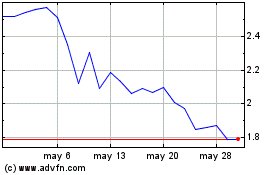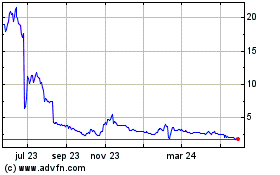BioXcel Therapeutics, Inc. (Nasdaq: BTAI), a biopharmaceutical
company utilizing artificial intelligence to develop transformative
medicines in neuroscience and immuno-oncology, today announced
positive topline results from a post-marketing requirement (PMR)
study of IGALMI™ (dexmedetomidine) sublingual film that
demonstrated no evidence of tachyphylaxis, tolerance, or withdrawal
with the 180 mcg dose after seven days of PRN (as-needed)
treatment.
“We are encouraged by these study results showing a lack of
tachyphylaxis, tolerance, and withdrawal at the highest approved
dose of IGALMI for patients experiencing frequent episodes of
agitation,” said Vincent O’Neill, M.D., Chief of Product
Development and Medical Officer of BioXcel Therapeutics. “This new
dataset may help address potential changes to the language in the
current label. This dataset also adds to our body of evidence for
our lead neuroscience asset as we prepare to advance our Phase 3
SERENITY and TRANQUILITY trials.”
PMR Study Methods and Topline Results In the
single-arm, open-label study, 28 inpatient adults with frequent
episodes of agitation associated with bipolar disorders or
schizophrenia self-administered 180 mcg dose of IGALMI™ as needed
over seven days. A total of 83 episodes were treated.
Efficacy Measurements: although this PMR study
was not statistically powered to evaluate repeat-dose efficacy,
changes in agitation were assessed through the Positive and
Negative Syndrome Scale-Excitatory Component (PEC or PANSS-EC)
Score and the Clinical Global Impressions – Improvement
(CGI-I) Scale, the same measures as used in previous Phase 3
studies.
- Mean PEC score reduction was observed following all doses of
IGALMI administered as needed over the treatment period (see graph
below).
- All patients showed improvement in agitation symptoms as
assessed by the CGI-I Scale for all doses administered as needed
over the treatment period.
- Prior to treatment with IGALMI, most patients exhibited mild to
moderate agitation as assessed by the Agitation Calmness Evaluation
Scale (ACES). ACES scores post-dose revealed a marked calming
effect with no patient experiencing unarousable somnolence (ACES
score 9).
In addition, no withdrawal or rebound phenomena were
observed.
Mean PEC Score Changes During Study
Period
Safety and Tolerability Results: The 180 mcg
dose of IGALMI was generally well tolerated and showed favorable
safety results in treating patients with frequent episodes of
agitation.
- There were no discontinuations due to adverse events.
- No serious adverse events were reported.
“We are pleased these study findings showed consistent responses
to PRN treatment for episodes of agitation over the study duration
with no evidence of worsening or withdrawal,” said Rob Risinger,
M.D., Chief Medical Officer of Neuroscience. “We look forward to
sharing these IGALMI PMR data with FDA.”
About IGALMI™
(dexmedetomidine) sublingual
film
INDICATION
IGALMI™ (dexmedetomidine) sublingual film is a prescription
medicine, administered under the supervision of a health care
provider, that is placed under the tongue or behind the lower lip
and is used for the acute treatment of agitation associated with
schizophrenia and bipolar disorder I or II in adults. The safety
and effectiveness of IGALMI has not been studied beyond 24 hours
from the first dose. It is not known if IGALMI is safe and
effective in children.
IMPORTANT SAFETY
INFORMATION
IGALMI can
cause serious
side effects,
including:
- Decreased blood pressure,
low blood pressure upon standing, and slower than normal heart
rate, which may be more likely in patients with low blood volume,
diabetes, chronic high blood pressure,
and older
patients. IGALMI is taken under the supervision of
a healthcare provider who will monitor vital signs (like blood
pressure and heart rate) and alertness after IGALMI is administered
to help prevent falling or fainting. Patients should be adequately
hydrated and sit or lie down after taking IGALMI and instructed to
tell their healthcare provider if they feel dizzy, lightheaded, or
faint.
- Heart rhythm changes (QT interval
prolongation). IGALMI should not be given to patients with
an abnormal heart rhythm, a history of an irregular heartbeat, slow
heart rate, low potassium, low magnesium, or taking other drugs
that could affect heart rhythm. Taking IGALMI with a history of
abnormal heart rhythm can increase the risk of torsades de pointes
and sudden death. Patients should be instructed to tell their
healthcare provider immediately if they feel faint or have heart
palpitations.
- Sleepiness/drowsiness. Patients should not
perform activities requiring mental alertness, such as driving or
operating hazardous machinery, for at least 8 hours after taking
IGALMI.
- Withdrawal reactions,
tolerance, and
decreased response/efficacy.
IGALMI was not studied for longer than 24 hours after the first
dose. Physical dependence, withdrawal symptoms (e.g., nausea,
vomiting, agitation), and decreased response to IGALMI may occur if
IGALMI is used longer than 24 hours.
The most
common side
effects of IGALMI in clinical studies were
sleepiness or drowsiness, a prickling or tingling sensation or
numbness of the mouth, dizziness, dry mouth, low blood pressure,
and low blood pressure upon standing.
These are not all the possible side effects of IGALMI. Patients
should speak with their healthcare provider for medical advice
about side effects.
Patients should tell their healthcare provider about
their medical history, including if they suffer from any
known heart problems, low potassium, low magnesium, low blood
pressure, low heart rate, diabetes, high blood pressure, history of
fainting, or liver impairment. They should also tell their
healthcare provider if they are pregnant or breastfeeding or take
any medicines, including prescription and over-the-counter
medicines, vitamins, and herbal supplements. Patients should
especially tell their healthcare provider if they take any drugs
that lower blood pressure, change heart rate, or take anesthetics,
sedatives, hypnotics, and opioids.
Everyone is encouraged to report negative side effects of
prescription drugs to the FDA. Visit www.fda.gov/medwatch or call
1-800-FDA-1088. You can also contact BioXcel Therapeutics, Inc. at
1-833-201- 1088 or medinfo@bioxceltherapeutics.com.
Please see full Prescribing Information.
About the Positive and Negative Syndrome
Scale-Excitatory Component Score (PEC or PANSS-EC)The PEC
total score is a validated endpoint for use in clinical research to
quantify the severity of a patient’s acute agitation. The PEC
rating evaluates 5 elements associated with agitation: poor impulse
control, tension, hostility, uncooperativeness, and excitement;
each scored 1 (minimum) to 7 (maximum). The PEC total score is the
sum of these 5 elements and thus ranges from 5 to 35.
About the Clinical Global
Impressions – Improvement Scale (CGI-I)The CGI-I scale is
a widely used rating scale to assess overall improvement or change
in a patient's condition. It provides a subjective evaluation of
the patient's global improvement relative to their baseline or
previous state. The scale consists of categories ranging from "Very
much improved" to "Very much worse," allowing healthcare
professionals or researchers to rate the patient's progress based
on their clinical judgment.
About BioXcel Therapeutics, Inc.BioXcel
Therapeutics, Inc. (Nasdaq: BTAI) is a biopharmaceutical company
utilizing artificial intelligence to develop transformative
medicines in neuroscience. Its wholly owned subsidiary, OnkosXcel
Therapeutics, is focused on the development of medicines in
immuno-oncology. The Company’s drug re-innovation approach
leverages existing approved drugs and/or clinically validated
product candidates together with big data and proprietary machine
learning algorithms to identify new therapeutic indications. For
more information, please visit bioxceltherapeutics.com.
Forward-Looking Statements
This press release includes “forward-looking statements” within the
meaning of the Private Securities Litigation Reform Act of 1995. We
intend such forward-looking statements to be covered by the safe
harbor provisions for forward-looking statements contained in
Section 27A of the Securities Act of 1933, as amended and Section
21E of the Securities Exchange Act of 1934, as amended. All
statements contained in this press release other than statements of
historical fact should be considered forward-looking statements,
including, without limitation, statements related to the potential
efficacy, safety and tolerability of IGALMI™ (dexmedetomidine) for
PRN treatment of agitation associated with bipolar disorders or
schizophrenia; the Company’s expectations regarding the warnings
and precautions language in the current IGALMITM label; and the
potential for the results from the Company’s completed, ongoing and
proposed clinical trials to support regulatory approvals for its
product candidates; . When used herein, words including
“anticipate,” “believe,” “can,” “continue,” “could,” “designed,”
“estimate,” “expect,” “forecast,” “goal,” “intend,” “may,” “might,”
“plan,” “possible,” “potential,” “predict,” “project,” “should,”
“target,” “will,” “would” and similar expressions are intended to
identify forward-looking statements, though not all forward-looking
statements use these words or expressions. In addition, any
statements or information that refer to expectations, beliefs,
plans, projections, objectives, performance or other
characterizations of future events or circumstances, including any
underlying assumptions, are forward-looking. All forward-looking
statements are based upon the Company’s current expectations and
various assumptions. The Company believes there is a reasonable
basis for its expectations and beliefs, but they are inherently
uncertain. The Company may not realize its expectations, and its
beliefs may not prove correct. Actual results could differ
materially from those described or implied by such forward-looking
statements as a result of various important factors, including,
without limitation: its limited operating history; its incurrence
of significant losses; its need for substantial additional funding
and ability to raise capital when needed; the impact of the
reprioritization; its significant indebtedness, ability to comply
with covenant obligations and potential payment obligations related
to such indebtedness and other contractual obligations; the Company
has identified conditions and events that raise substantial doubt
about its ability to continue as a going concern; its limited
experience in drug discovery and drug development; risks related to
the TRANQUILITY program; its dependence on the success and
commercialization of IGALMI™, BXCL501, BXCL502, BXCL701 and BXCL702
and other product candidates; its lack of experience in marketing
and selling drug products; the risk that IGALMI or the Company’s
product candidates may not be accepted by physicians or the medical
community in general; the Company still faces extensive and ongoing
regulatory requirements and obligations for IGALMI; the failure of
preliminary data from its clinical studies to predict final study
results; failure of its early clinical studies or preclinical
studies to predict future clinical studies; its ability to receive
regulatory approval for its product candidates; its ability to
enroll patients in its clinical trials; undesirable side effects
caused by the Company’s product candidates; its novel approach to
the discovery and development of product candidates based on
EvolverAI; the significant influence of and dependence on BioXcel
LLC; its exposure to patent infringement lawsuits; its reliance on
third parties; its ability to comply with the extensive regulations
applicable to it; impacts from data breaches or cyber-attacks, if
any; risks associated with the increased scrutiny relating to
environmental, social and governance (ESG) matters; risks
associated with federal, state or foreign health care “fraud and
abuse” laws; and its ability to commercialize its product
candidates, as well as the important factors discussed under the
caption “Risk Factors” in its Quarterly Report on Form 10-Q for the
quarterly period ended March 31, 2024, as such factors may be
updated from time to time in its other filings with the SEC, which
are accessible on the SEC’s website at www.sec.gov and the
Investors section of the Company’s website at
www.bioxceltherapeutics.com.. These and other important factors
could cause actual results to differ materially from those
indicated by the forward-looking statements made in this press
release. Any such forward-looking statements represent management’s
estimates as of the date of this press release. While the Company
may elect to update such forward-looking statements at some point
in the future, except as required by law, it disclaims any
obligation to do so, even if subsequent events cause our views to
change. These forward-looking statements should not be relied upon
as representing the Company’s views as of any date subsequent to
the date of this press release.
Contact Information
CorporateBioXcel Therapeutics Erik Kopp
1.203.494.7062ekopp@bioxceltherapeutics.com
MediaRusso PartnersDavid Schull
1.858.717.2310David.schull@russopartnersllc.comScott
Stachowiak1.646.942.5630Scott.stachowiak@russopartnersllc.com
Source: BioXcel Therapeutics, Inc.
IGALMI™ is a trademark of BioXcel Therapeutics, Inc.BT BIOXCEL
THERAPEUTICS is a registered trademark of BioXcel Therapeutics,
Inc. All other trademarks are the properties of their respective
owners.Copyright © 2024, BioXcel Therapeutics, Inc. All rights
reserved.
A photo accompanying this announcement is available at
https://www.globenewswire.com/NewsRoom/AttachmentNg/c0a8d9b2-ba77-4e92-85bd-8a0abd50f8c7
BioXcel Therapeutics (NASDAQ:BTAI)
Gráfica de Acción Histórica
De Dic 2024 a Ene 2025

BioXcel Therapeutics (NASDAQ:BTAI)
Gráfica de Acción Histórica
De Ene 2024 a Ene 2025
